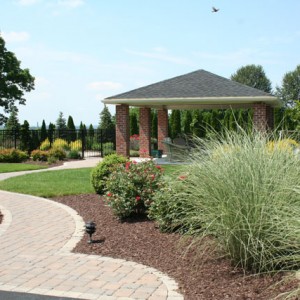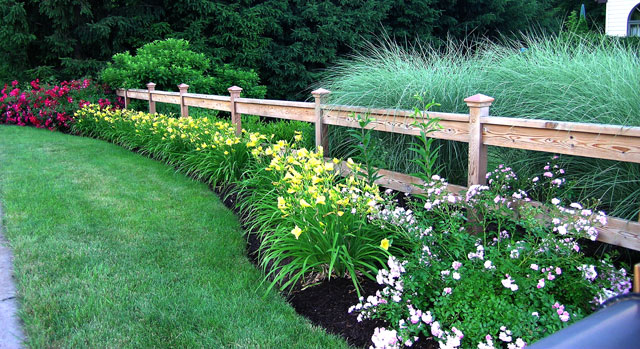Mulching

 Mulching, is important for planting beds, and around newly installed trees and shrubs. Mulch does more than just look good in your landscaping. Mulch helps the soil retain water, reduces soil temperature fluctuations, retards weed, helps reduce soil erosion and compaction, and provides nutrients to the soil as it breaks down. Mulch should be spread evenly to about two to three inches in depth. Proper mulching is very important to maintaing plant health. Do not pile too much mulch under shrubs or around the base of tree trunks, however. You want to keep these areas as clear as possible, which means a thin layer is all you need.
Mulching, is important for planting beds, and around newly installed trees and shrubs. Mulch does more than just look good in your landscaping. Mulch helps the soil retain water, reduces soil temperature fluctuations, retards weed, helps reduce soil erosion and compaction, and provides nutrients to the soil as it breaks down. Mulch should be spread evenly to about two to three inches in depth. Proper mulching is very important to maintaing plant health. Do not pile too much mulch under shrubs or around the base of tree trunks, however. You want to keep these areas as clear as possible, which means a thin layer is all you need.
When your landscaping was installed, Plantique laid down the proper amount of mulch for your project, so you will probably not need to spread more for at least the next 6 months to a year. From a maintenance perspective, mulch is usually applied in spring, to help prevent weeds and hold moisture in the soil. Fall mulching can aid in winterizing less-hardy plants.
Sometimes fungus may appear in mulch. Fungus is a normal part of the decomposition process. It is generally harmless to plants, and it usually disappears in a short time. If you want to identify a fungus, contact your local county extension agency to learn about the best way to get rid of the variety you have. Penn State University Cooperative Extension, Lehigh County Office has an excellent Web page describing common mulch fungus and what to do about them.
Mulch is the finishing touch, that not only makes for a great looking landscape, but ensures plant health.
- Streamside mulching along Little Lehigh Creek



